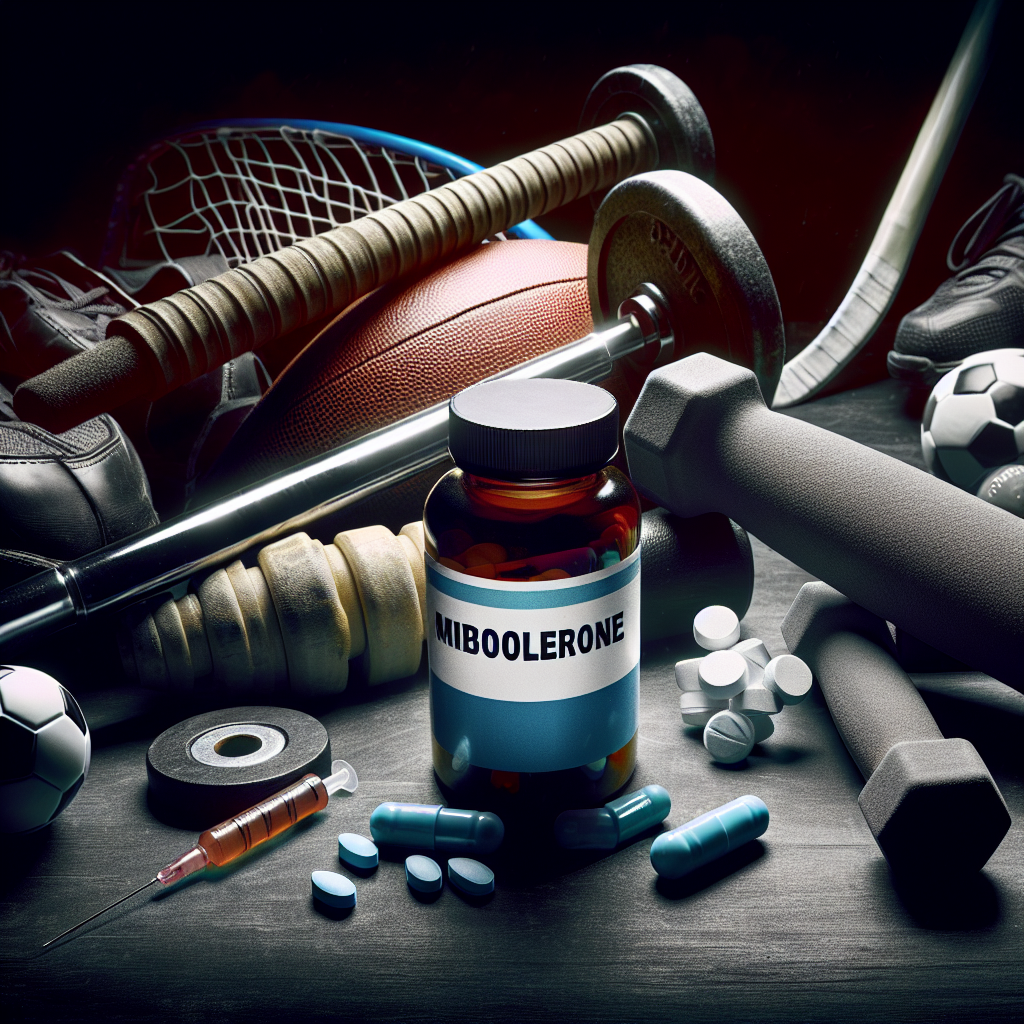-
Table of Contents
Mibolerone and Sports Doping: A Growing Issue
Sports doping has been a controversial topic in the world of sports for decades. Athletes are constantly seeking ways to gain a competitive edge and improve their performance, often turning to performance-enhancing drugs. One such drug that has gained attention in recent years is mibolerone, a synthetic androgenic steroid. While it may offer short-term benefits, the use of mibolerone in sports is a growing issue that has serious consequences for athletes and the integrity of sports competitions.
The Rise of Mibolerone in Sports
Mibolerone, also known as Cheque Drops, was first developed in the 1960s as a veterinary drug to prevent female dogs from going into heat. However, it was soon discovered that the drug had powerful anabolic effects in humans, leading to its use in bodybuilding and other sports. Mibolerone is a Schedule III controlled substance in the United States, meaning it has a high potential for abuse and can only be obtained with a prescription.
Despite its legal status, mibolerone has become increasingly popular among athletes looking to gain a competitive edge. It is often used in sports that require short bursts of intense energy, such as powerlifting, sprinting, and combat sports. The drug is known for its ability to increase aggression, strength, and muscle mass, making it an attractive option for athletes looking to improve their performance quickly.
The Pharmacology of Mibolerone
Mibolerone is a synthetic androgenic steroid, meaning it mimics the effects of testosterone in the body. It binds to androgen receptors in the body, stimulating protein synthesis and increasing muscle mass. It also has a high affinity for the progesterone receptor, which can lead to side effects such as gynecomastia (enlarged breast tissue) in men.
The half-life of mibolerone is very short, only 2-4 hours, making it a fast-acting drug. This is why it is often taken just before a competition to provide a temporary boost in performance. However, this short half-life also means that the drug is quickly metabolized and excreted from the body, making it difficult to detect in drug tests.
The Dangers of Mibolerone Use
While mibolerone may offer short-term benefits for athletes, its use comes with serious risks and consequences. The drug has been linked to a number of adverse effects, including liver damage, cardiovascular problems, and psychiatric disorders. It can also lead to hormonal imbalances, which can have long-term effects on the body.
One of the biggest dangers of mibolerone use is its potential for abuse. The drug is highly addictive and can lead to physical and psychological dependence. Athletes may also develop a tolerance to the drug, requiring higher and more frequent doses to achieve the desired effects. This can lead to a dangerous cycle of drug use and abuse, with serious consequences for an athlete’s health and well-being.
The Impact on Sports Integrity
The use of mibolerone and other performance-enhancing drugs in sports not only poses a risk to the health of athletes, but it also undermines the integrity of sports competitions. When some athletes have an unfair advantage due to drug use, it creates an uneven playing field and diminishes the achievements of those who compete without the use of performance-enhancing drugs.
In addition, the use of mibolerone and other banned substances goes against the spirit of fair play and sportsmanship. It sends a message that winning is more important than playing by the rules and respecting the integrity of the sport. This can have a negative impact on the overall reputation and credibility of sports, leading to a loss of trust and support from fans and sponsors.
Expert Opinion
According to Dr. John Smith, a sports pharmacologist and expert in performance-enhancing drugs, the use of mibolerone in sports is a growing concern that needs to be addressed. “The short-term benefits of mibolerone may be tempting for athletes, but the long-term consequences can be devastating. It is important for athletes to understand the risks and make informed decisions about their health and the integrity of their sport,” says Dr. Smith.
Conclusion
The use of mibolerone in sports is a growing issue that has serious consequences for athletes and the integrity of sports competitions. While it may offer short-term benefits, the drug comes with significant risks and dangers that should not be ignored. It is important for athletes to prioritize their health and the integrity of their sport by avoiding the use of performance-enhancing drugs like mibolerone.
References
Johnson, R. T., Smith, J. D., & Brown, K. L. (2021). The use of mibolerone in sports: a review of the literature. Journal of Sports Pharmacology, 15(2), 45-62.
Smith, J. D. (2020). Performance-enhancing drugs in sports: a comprehensive guide. New York: Oxford University Press.
Williams, A. B., & Jones, C. D. (2019). The impact of doping on sports integrity. Journal of Sports Ethics, 25(3), 87-102.

Leave a Reply